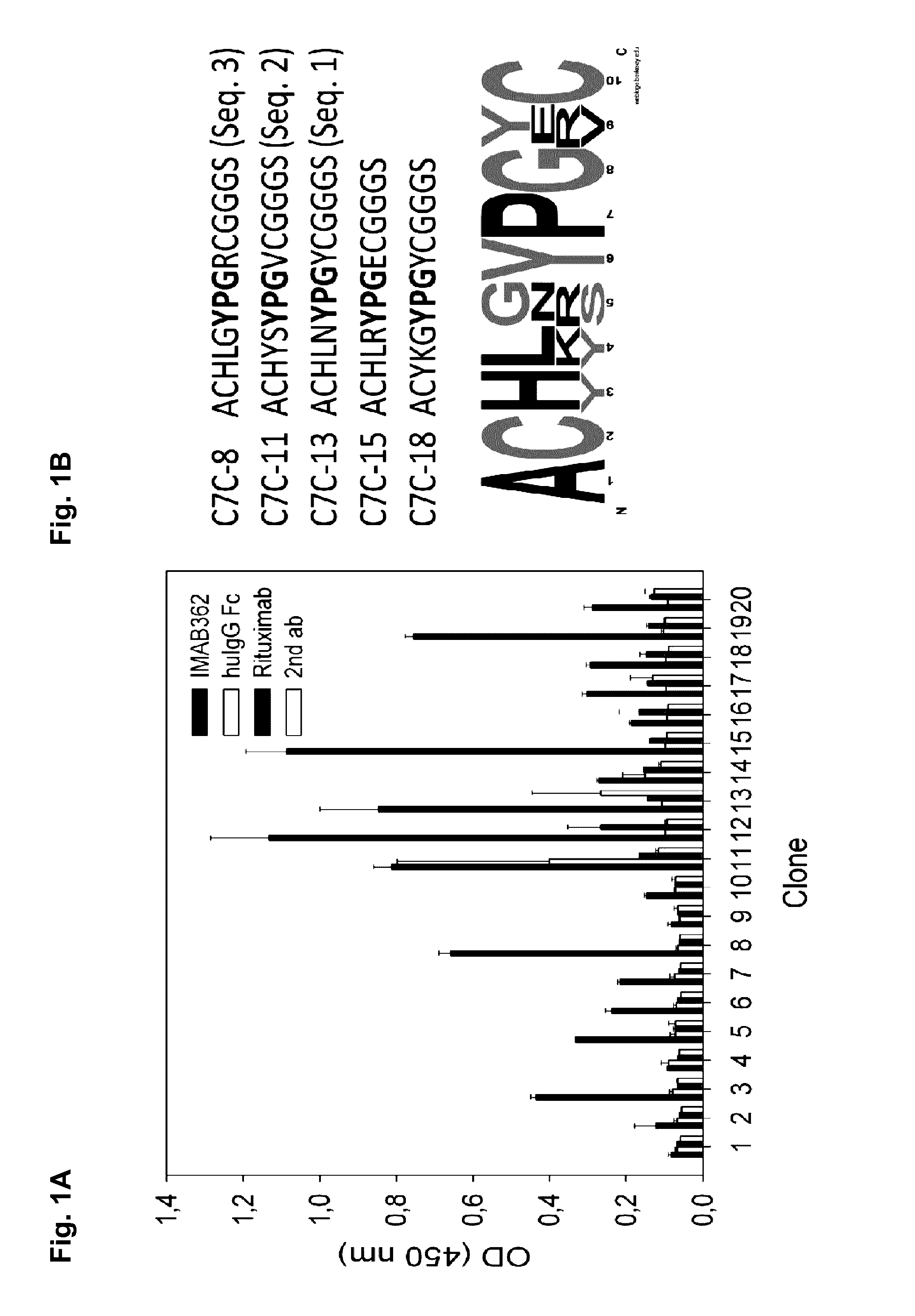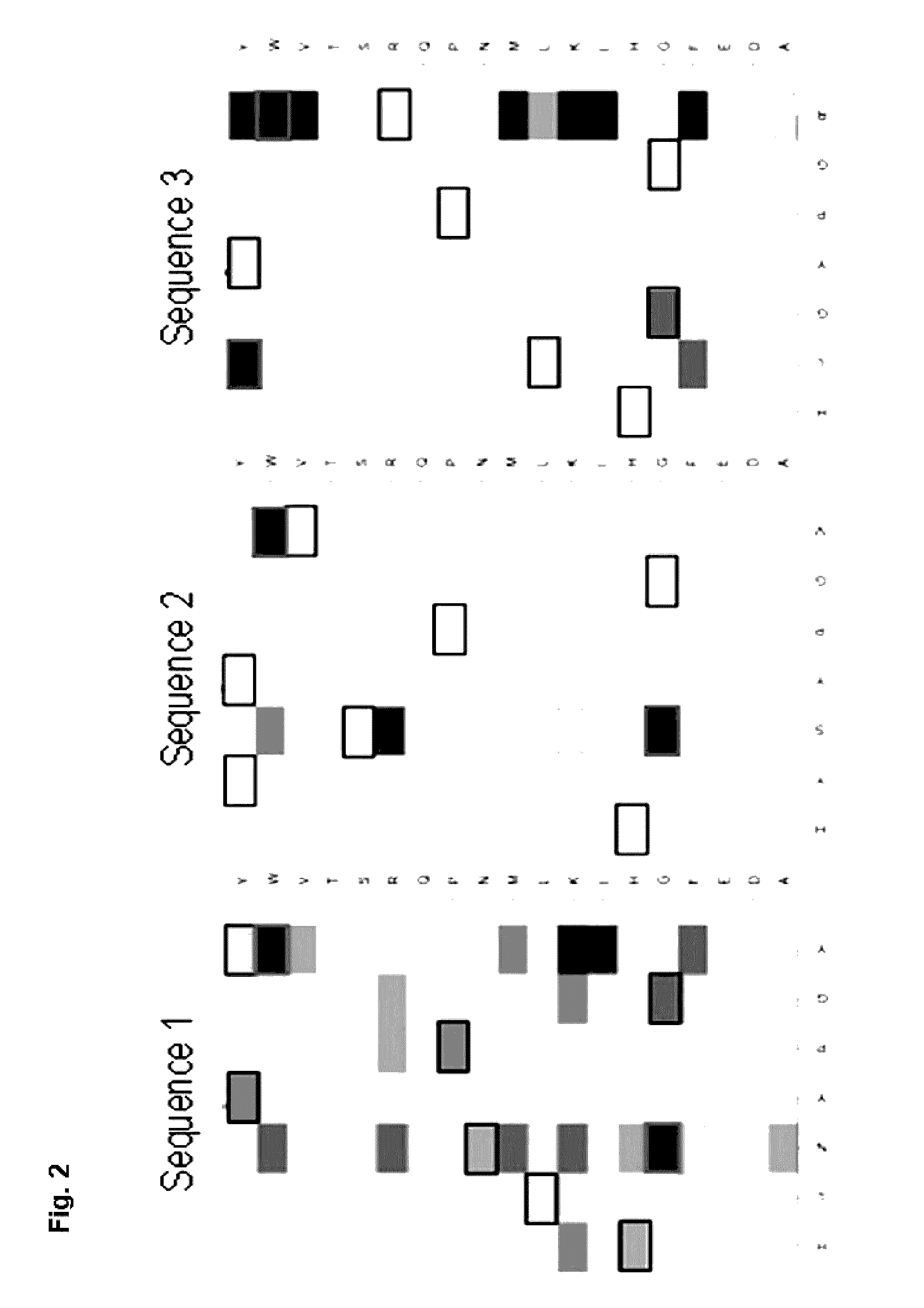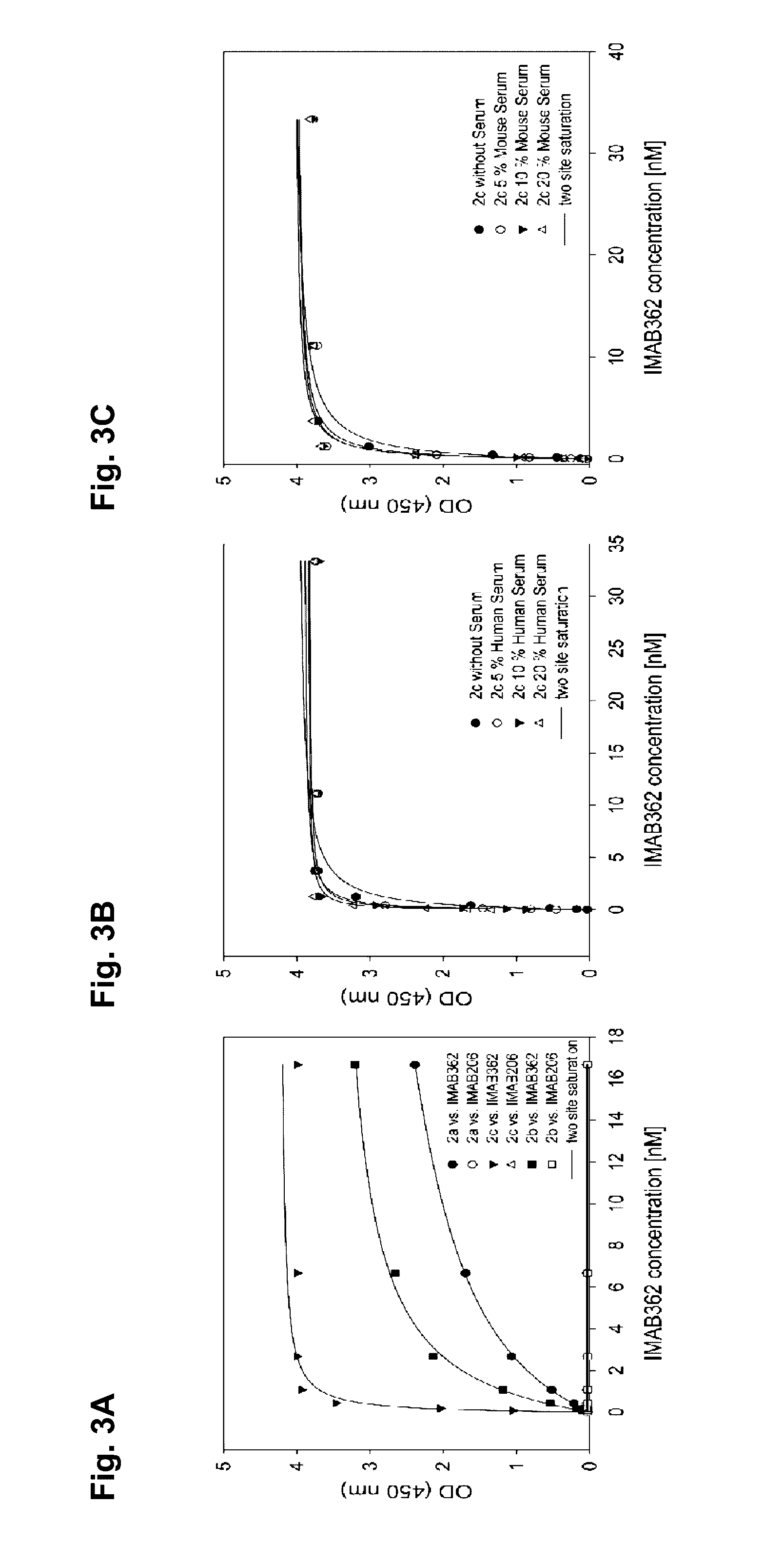Peptide mimotopes of claudin 18.2 and uses thereof
a technology of claudin and mimotopes, which is applied in the field of peptide mimotopes of claudin 18 . 2 and its use, can solve the problems of time-consuming and expensive generation of anti-idiotypic antibodies, difficult production and handling of transmembrane proteins, etc., and achieve the effect of rapid optimization of binding properties
- Summary
- Abstract
- Description
- Claims
- Application Information
AI Technical Summary
Benefits of technology
Problems solved by technology
Method used
Image
Examples
example 1
Materials and Methods
[0352]Phage Display Selection:
[0353]IMAB362 binding peptides were identified by phage display technology using a Ph.D.™-C7C phage display peptide library kit (New England Biolabs) with a solution-phase panning protocol. For the panning 50 μl of Protein A Dynabeads (Invitrogen) were washed once with 1 ml of TBST buffer (50 mM Tris-HCl (pH 7.5), 150 mM NaCl+0.1% Tween-20) and subsequently blocked with 1 ml blocking buffer (3% BSA in TBS) for 1 h at 4° C. Afterwards, the beads were washed four times with 1 ml TBS-T buffer. A 100-fold representation of the library (1E+11 phages) was incubated with 100 nM of the antibody for 20 min at RT. Antibody-bound phages were captured with blocked Protein A beads by incubation for 15 min at RT with slight shaking. After incubation, beads were washed ten times with TBST to remove unbound phages. Elution was done by subsequent incubation with 50 μl of 100 mM triethylamine (for 6 min) and 50 μl of 100 mM glycine-HCl, pH 2 (for 10 ...
example 2
Selection of IMAB362-Specific Peptides by Phage Display
[0382]For the identification of IMAB362-binding peptides phage display was performed using a disulfide-constrained random 7mer M13 phage library (New England Biolabs). To ensure good accessibility of the antibody a selection in solution protocol with protein-A bead capture of binding phages was carried out. After three consecutive screening rounds with increased stringency an enrichment of target-specific phages could be observed, measured by dilution plating of input and output phages and phage ELISA (data not shown). Analysis of single clones randomly picked after the 3rd screening round yielded several IMAB362 binders (FIG. 1A). The phage ELISA suggests that the isolated peptides are specific for the variable part of IMAB362, because a control antibody with similar chimeric backbone (Rituximab) and a human IgG Fc fragment were not recognized. DNA sequence analysis of selected clones revealed a common YPG motif (FIG. 1B) in th...
example 3
Influence of CLDN18.2 Mimotope on BiMAB Binding to NugC4 Target Cells and NugC4 Target Cell Lysis
Cell Culture
[0390]The human gastric cancer cell line NugC4 was derived from the Japanese Collection of Research Bioresources and has been stably transduced with the human CLDN18.2 gene in addition to a stable transfection with the firefly luciferase gene. The cells were cultivated in RPMI complete medium containing 10% FBS at 37° C. in a 7.5% CO2 humidified incubator.
Preparation of Primary Human T-Cells
[0391]Human T-cells were freshly isolated from human blood from healthy donors according to standard procedures (Current Protocols in Immunology, 2012): briefly, blood was diluted with DPBS, layered on Ficoll-Paque Plus (GE Healthcare Life Sciences) and centrifuged. Peripheral blood mononuclear cells (PBMC) were collected from the interphase, washed with cold DPBS supplemented with 2 mM EDTA and counted. Human T-cells were subsequently separated by magnetic-activated cell separation (MACS)...
PUM
| Property | Measurement | Unit |
|---|---|---|
| Composition | aaaaa | aaaaa |
| Fluorescence | aaaaa | aaaaa |
| Covalent bond | aaaaa | aaaaa |
Abstract
Description
Claims
Application Information
 Login to View More
Login to View More - R&D
- Intellectual Property
- Life Sciences
- Materials
- Tech Scout
- Unparalleled Data Quality
- Higher Quality Content
- 60% Fewer Hallucinations
Browse by: Latest US Patents, China's latest patents, Technical Efficacy Thesaurus, Application Domain, Technology Topic, Popular Technical Reports.
© 2025 PatSnap. All rights reserved.Legal|Privacy policy|Modern Slavery Act Transparency Statement|Sitemap|About US| Contact US: help@patsnap.com



